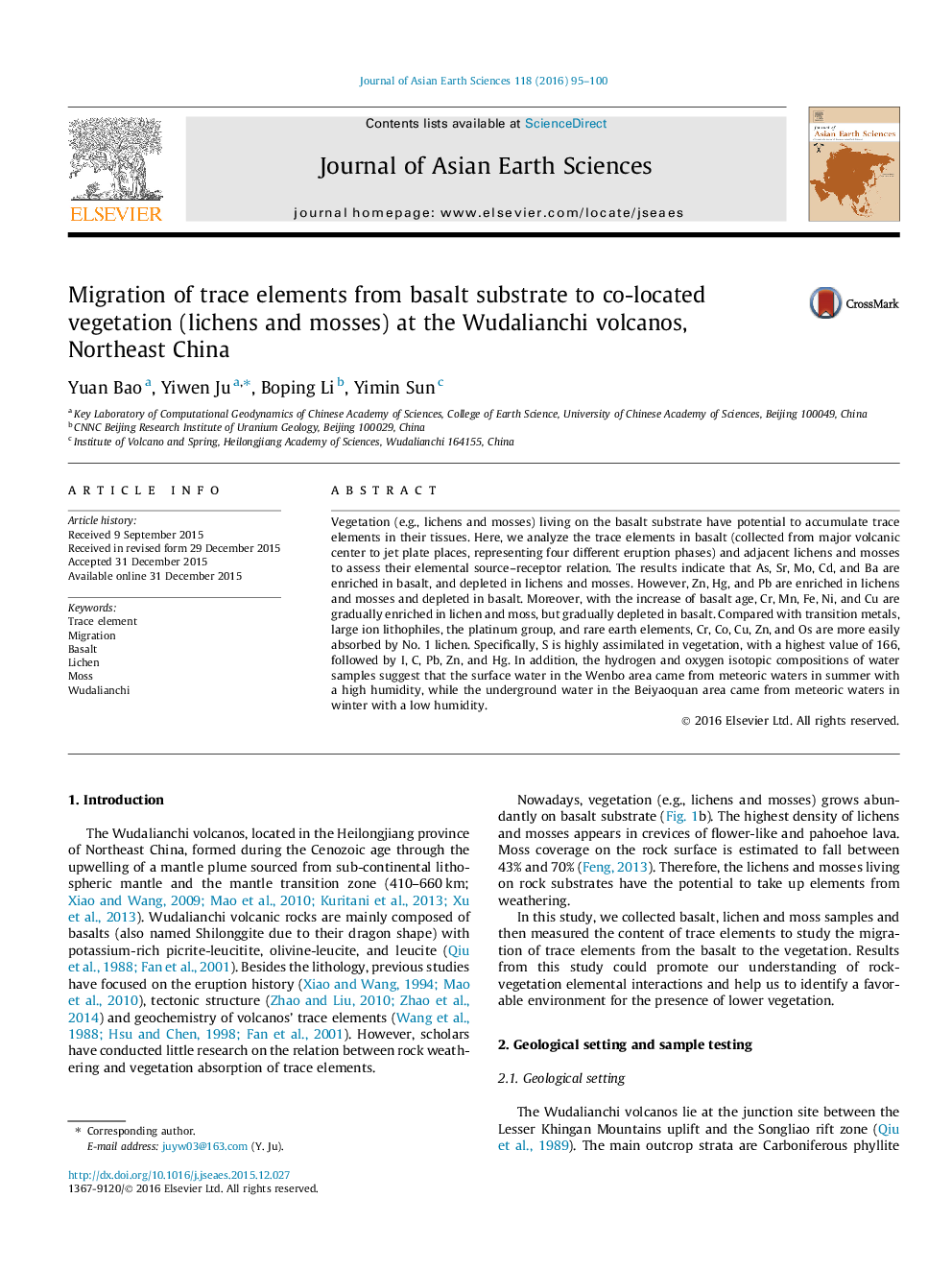| Article ID | Journal | Published Year | Pages | File Type |
|---|---|---|---|---|
| 4730142 | Journal of Asian Earth Sciences | 2016 | 6 Pages |
•The trace elements in basalt and adjacent lichens and mosses are analyzed.•As, Sr, Mo, Cd, and Ba are enriched in basalts.•Zn, Hg, and Pb are enriched in lichens and mosses.•Cr, Mn, Fe, Ni, and Cu are gradually depleted in basalt with the increase of age.•S is highly assimilated in vegetation, followed by I, C, Pb, Zn, and Hg.
Vegetation (e.g., lichens and mosses) living on the basalt substrate have potential to accumulate trace elements in their tissues. Here, we analyze the trace elements in basalt (collected from major volcanic center to jet plate places, representing four different eruption phases) and adjacent lichens and mosses to assess their elemental source–receptor relation. The results indicate that As, Sr, Mo, Cd, and Ba are enriched in basalt, and depleted in lichens and mosses. However, Zn, Hg, and Pb are enriched in lichens and mosses and depleted in basalt. Moreover, with the increase of basalt age, Cr, Mn, Fe, Ni, and Cu are gradually enriched in lichen and moss, but gradually depleted in basalt. Compared with transition metals, large ion lithophiles, the platinum group, and rare earth elements, Cr, Co, Cu, Zn, and Os are more easily absorbed by No. 1 lichen. Specifically, S is highly assimilated in vegetation, with a highest value of 166, followed by I, C, Pb, Zn, and Hg. In addition, the hydrogen and oxygen isotopic compositions of water samples suggest that the surface water in the Wenbo area came from meteoric waters in summer with a high humidity, while the underground water in the Beiyaoquan area came from meteoric waters in winter with a low humidity.
